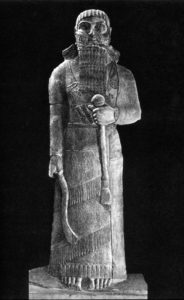The Annals of Shalmaneser III: Jehu’s Tribute (4 inscriptions)
Biblical Verses- 2 Kings 9–10
Relevance to Ancient Israel-
• While the Kurkh Stele claims that Israel was already “taken as an ally” after the battle of Qarqar, certainly by 841 BCE Israel had withdrawn its support for the Aramean coalition. Shalmaneser III’s annals record that in his 18th year (= 841 BCE) he received tribute from King Jehu of Israel. From the biblical chronology, it is clear that this was shortly after Jehu’s assumption of the throne in the wake of the murders of Joram II, his predecessor, as well as his rival, Ahaziah II, king of Judah. Large payments or bribes to the dominant empire are common in the Ancient Near East upon a treacherous ascension to power in a local chiefdom in order to ensure the new king’s rule.
• Many copies and pieces of versions of Shalmaneser’s annals have been discovered. Three of them contain reference to Jehu’s tribute in 841. A fourth inscription, the famous Black Obelisk, depicts Jehu giving tribute along with other vassal kings. It likely refers to the same tribute that is recorded in the other inscriptions, though it may record additional tribute payments as a sign of Jehu’s continued vassalage to Assyria. Some would question the veracity of Jehu’s tribute since there are other annals tablets that omit mention of it. Their objections are baseless since kings’ annals were updated throughout the course of his reign. Any versions that predate his 18th year certainly did not speak of events that hadn’t yet occurred, and later versions that pass over it are explained by the fact that editions written later in a king’s reign often greatly abbreviated his earlier accomplishments.
• Unexpectedly, the annals consistently refer to Jehu as “Jehu, son of Omri,” despite the fact that Jehu usurped the throne (2 Kings 9–10). Not only was he not Omri’s son, Jehu was not even his descendant! To explain this, we note that during the 9th-8th centuries BCE chiefdoms were often referred to by a dynastic title as “House of X,” X being the dynasty’s founder. So “son of Omri” refers to the name of Jehu’s dynasty (spoken of as the Omride Dynasty by scholars). And, even though he was not part of Omri’s lineage, the Assyrians seem to have understood his kingship as a continuation of the kingdom of Israel that rose to stature under Omri. It is interesting to note that this agrees only partially with the biblical view of events. To the pro-Judah authors of Kings and Chronicles, it was Omri’s son Ahab who brought Israel political prestige, not Omri himself. And, it was Jeroboam I who inaugurated a separate kingdom of Israel and set its religious destiny as one of syncretism in the worship of both Yahweh and other gods, including Ba’al and Asherah. Counter to the Assyrian view, for the Bible Omri was not the figurehead of the kingdom of Israel; Jeroboam I was.
For more on the annals, see-
Annals Edition 2- Marble Slab Inscription, 839 BCE




